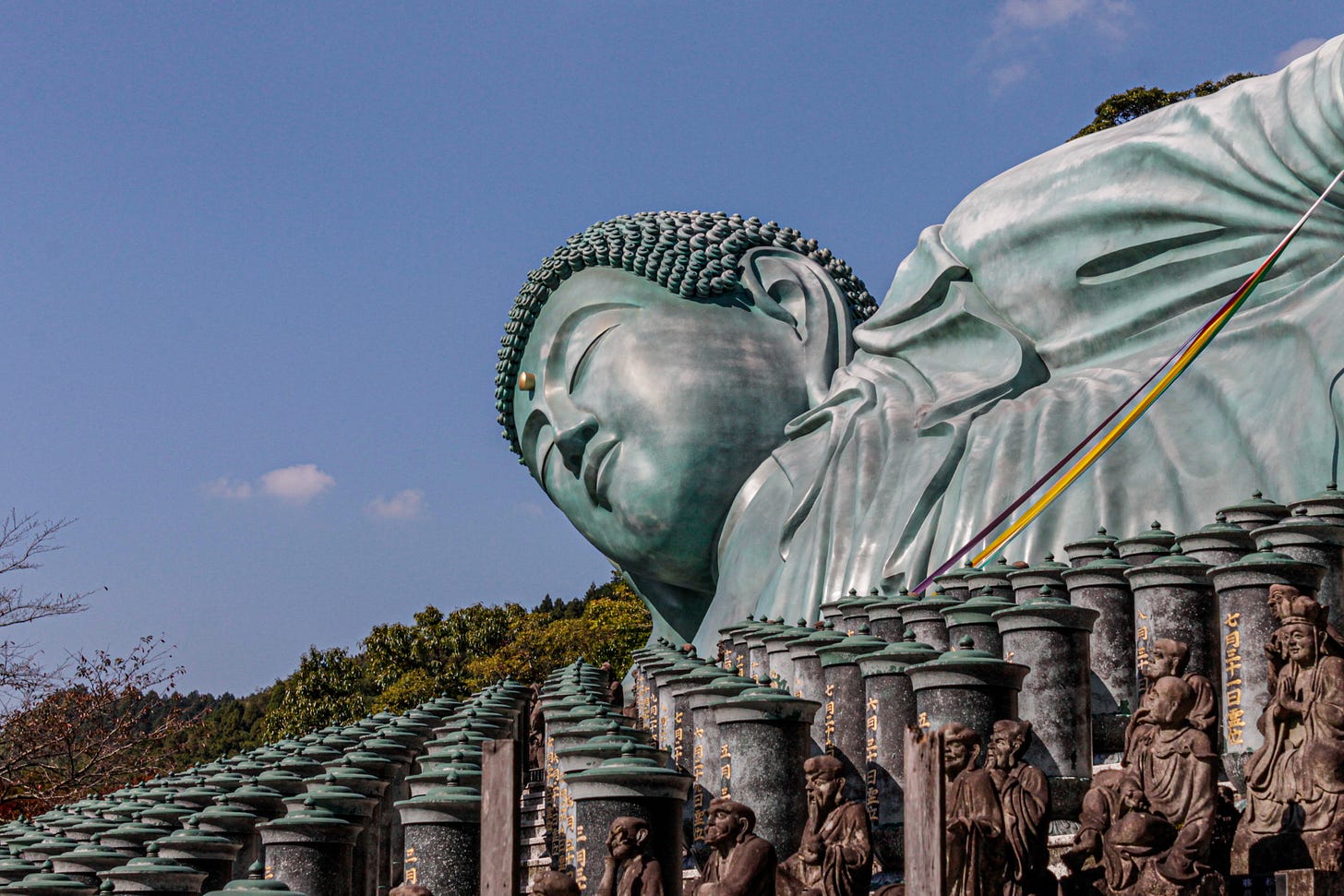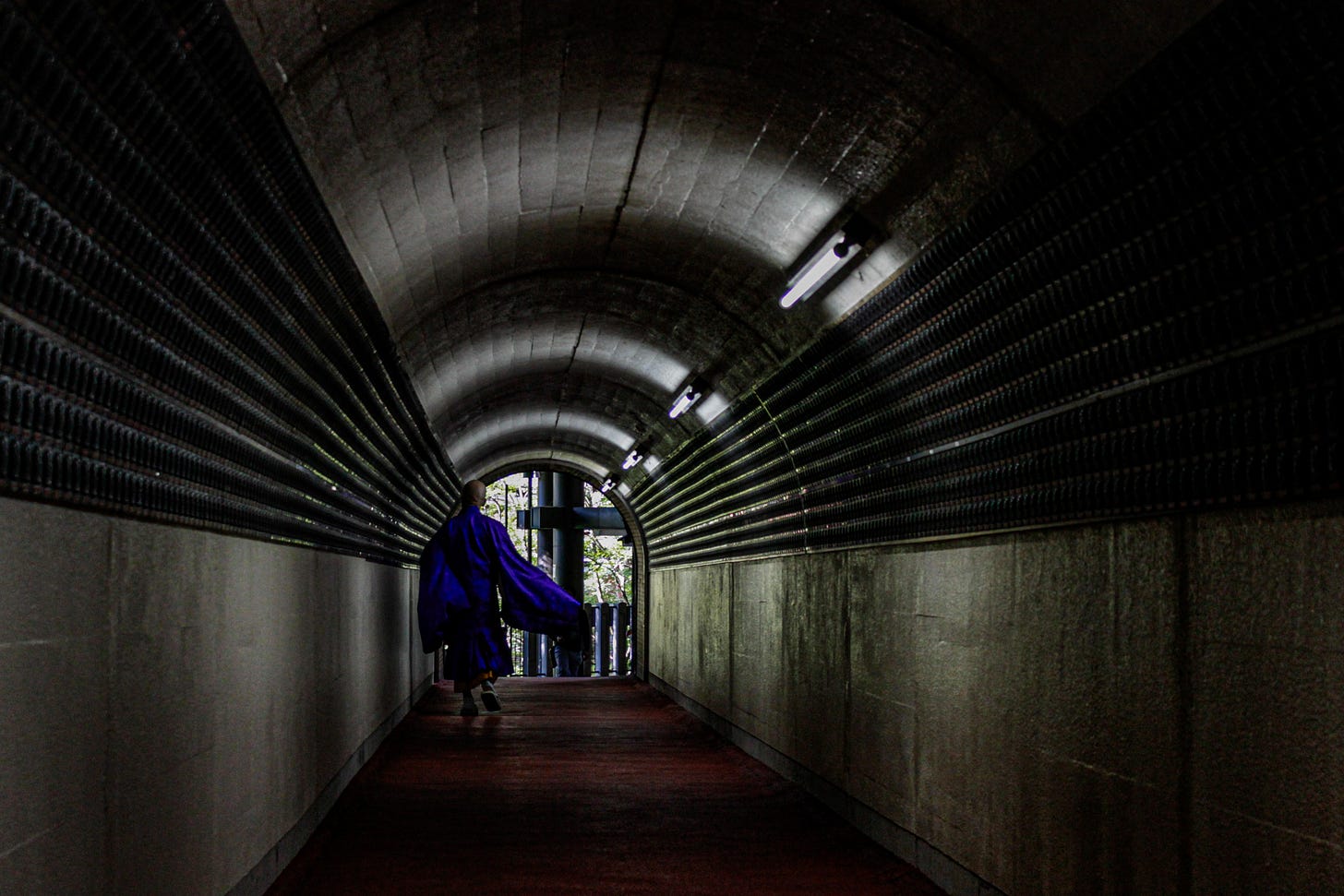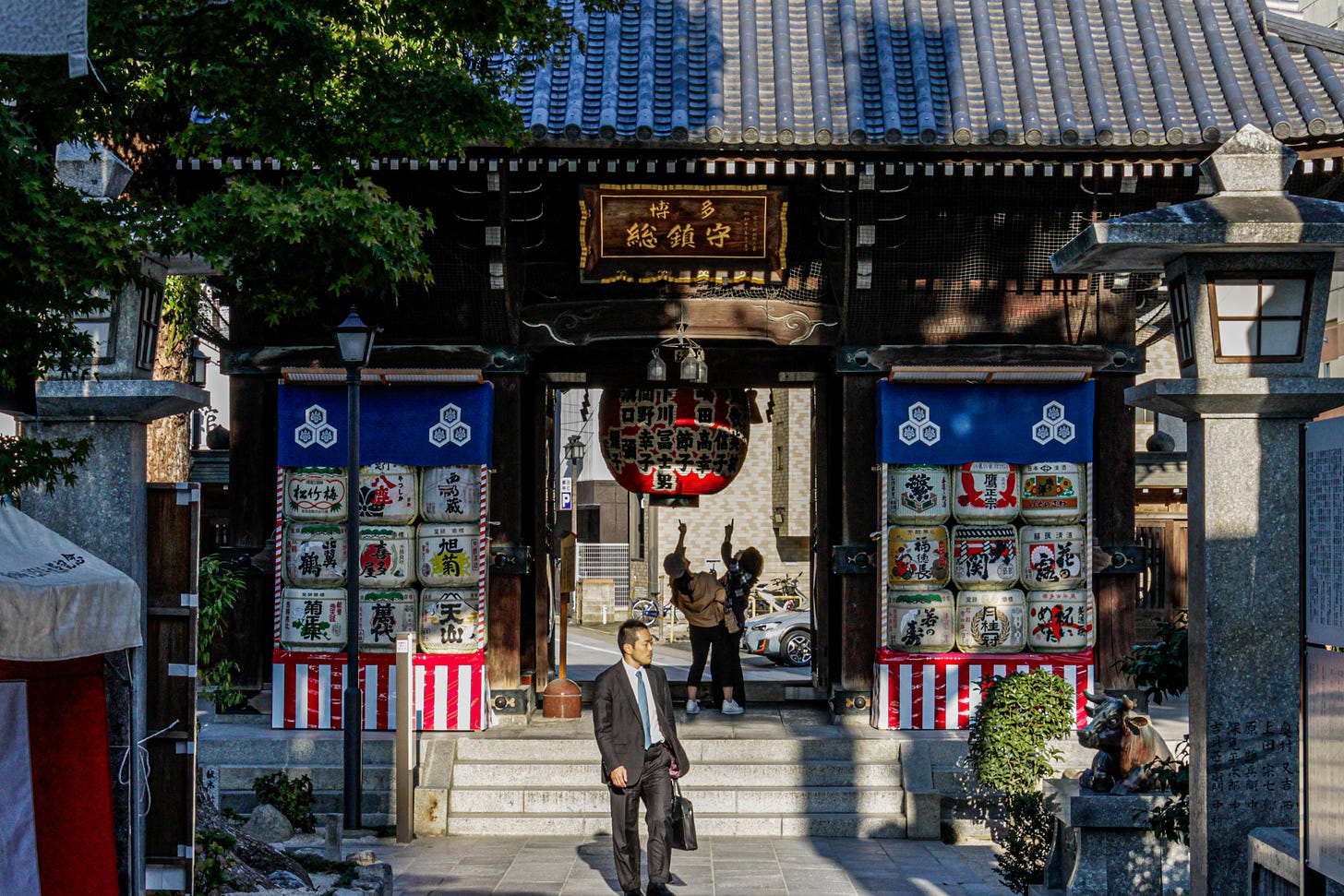After the volunteer camp in Minamata, in autumn 2019, I planned my way back to Tokyo stopping by some cities, but I didn’t have a clear program about which cities I wanted to visit. My friend Tami had to go to Fukuoka for her flight back to Jakarta, so I decided to follow her and visit Fukuoka.
From Minamata, we went by train to Fukuoka via Kumamoto. We arrived in the late evening and before going to our host we found on Couchsurfing, a Moroccan guy who had been living in Japan for 2 years, we decided to try the famous Hakata-style ramen, Fukuoka is renowned as the birthplace of ramen.
Hakata-style ramen is characterized by its creamy tonkotsu (pork bone) broth, thin noodles, and simple yet flavorful toppings such as chashu (sliced pork), green onions, and pickled ginger.
On the way to our host, we found the famous ramen chain Ichiran, there you can personalise your ramen, deciding the broth, which noodles, the toppings and the spiciness. Probably there I ate the best ramen in Japan.
Fukuoka is a vibrant city on the northern shore of Japan's Kyushu Island, effortlessly blending modernity with tradition. Boasting a rich history dating back over a thousand years, Fukuoka is famed for its resilient spirit and dynamic culture. Its bustling streets are lined with skyscrapers, shopping districts, and a plethora of eateries offering delicacies from street food stalls to Michelin-starred restaurants.
The city's warm hospitality and welcoming atmosphere make it a favoured destination, I have to say that I enjoyed this city and am happy to have planned it last minute even if I spent just one day there.
The day after, the first thing we decided to visit after breakfast was a temple just outside Fukuoka, we did a half-hour train ride to reach it.
Nanzoin Temple, nestled in the serene hills of Sasaguri town, is a hidden gem revered for its tranquil atmosphere and awe-inspiring Buddha statue. At the heart of this sacred site stands the towering bronze statue of the reclining Buddha, measuring an impressive 41 meters in length. This majestic figure, known as the "Nehanzo," symbolizes the Buddha's peaceful transition into nirvana.
Nanzoin Temple greets you with a sense of serenity because of the lush gardens and tranquil pathways adorned with stone lanterns. The temple complex offers a sanctuary for quiet contemplation and spiritual reflection, away from the hustle and bustle of city life.
The green hills surrounding the temple, are one of the best landscapes I have seen in Japan, this view and the peacefulness of the place made me appreciate it even more, and I still have a good memory of it.
Back to the city, we had a stroll and reached the Kushida Shrine in the heart of Hakata district, the central part of the city, which is a revered symbol of tradition and spirituality. Dating back over 1,300 years, this historic Shinto shrine is dedicated to the deity Susanoo-no-Mikoto, renowned in Japanese mythology as the god of sea and storms.
Torii are the gates to the temples, symbolically representing the transition between mundane and sacred. Stepping through the shrine's majestic torii gate, you are enveloped in a sense of sacredness as they meander through the meticulously maintained grounds, adorned with ancient cedar trees and traditional architectural marvels. The main hall, with its distinctive vermilion facade and intricate wooden carvings, stands as a testament to the shrine's enduring cultural significance.
We left the shrine and had another walk to reach Ohori Park, a serene oasis in the heart of Fukuoka, that invites you with its tranquil beauty and captivating allure. Spanning over 48 acres, this scenic park is centred around a picturesque pond, framed by lush greenery, vibrant flowers, and winding pathways.
Originally part of the moat system surrounding Fukuoka Castle, Ohori Park was transformed into a public recreational space in 1929, offering a peaceful retreat from the urban bustle. Its name, "Ohori," which translates to "large moat," pays homage to its historical origins.
Tami and I immersed ourselves in nature's splendour as we strolled along the water's edge, basking in the serenity of the fiery hues of autumn foliage. The park's verdant lawns provide a perfect spot for picnics, leisurely walks, or simply unwinding amidst the tranquillity.
We arrived there at the perfect time, we sat on a bench to snack and admire a beautiful sunset. I liked taking pictures during the sunset and even after it, playing with the skyline of the city and the reflection of the lake.
Before having dinner we decided to visit the Fukuoka Tower, an architectural marvel soaring 234 meters above the city skyline, which stands as an iconic symbol of Fukuoka's modernity and innovation. Located in the Momochi Seaside Park area, this tower offers breathtaking panoramic views of the City and its surrounding natural landscapes.
Constructed in 1989, Fukuoka Tower boasts a sleek, futuristic design inspired by the city's maritime heritage, with its exterior adorned in 8,000 half-mirrors that shimmer in the sunlight, resembling the scales of a giant fish. At night, the tower is illuminated by LED lights, creating a mesmerizing spectacle.
The tower has a main observation deck at 123 meters where we admired the lights of the city at night, we also went to the sky lounge at 120 and to the deck at 116 meters where there were several entertaining activities like pinballs and other games that you can find in a games room, with vistas of the cityscape, Hakata Bay, and the distant mountains beyond.
For dinner, we decided to try one of the quintessential food experiences in Fukuoka, eating at a yatai, or open-air food stalls, that line the city's streets. These cosy establishments offer an intimate setting where clients can savour delicious food while chatting with friendly chefs and fellow diners.
Unfortunately, all the yatai were full of people, you have to know that these stalls can host 5/6 people so it is very difficult to find a spot, so after a while, we had to give up and have dinner in a “regular” restaurant.
The morning after I had to say goodbye to Tami (until we met again in Singapore in December 2023), a bus to Hiroshima was waiting for me, but I will tell you about this city in my next post.
See you soon,
Flavio
































Amazing pictures! There are so many things to visit in Japan, this article made me feel like I want to go back (and eat those ramen)
Flavio, thank you for sharing your travel experience. It is my dream to explore Japanese culture as I am so inspired by it. Great pictures, you definitely have an eye.